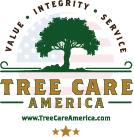Pruning cuts, regardless of your intent to help a tree thrive, are wounds that can stress a tree. Making sure the pruning cuts you make to a tree help it grow is essential to achieving strong and healthy growth in your trees. There are three types of pruning cuts, thinning, reduction and heading. Learn more about these types of pruning cuts to understand how pruning can take your trees to new heights or destroy a beautiful landscape.
Thinning Cuts
These pruning cuts are also called removal cuts. Thinning cuts can usually be done with hand pruners. These cuts won’t change the shape of the tree, but the cuts increase light to the canopy and remove dead wood or problem branches. With any type of pruning cuts, you should never cut branches that are bigger than four inches in diameter, as the wood may not be able to heal. Thinning cuts are generally done on branches under an inch in diameter. Always cut the wood at the point of origin so that the cut can heal correctly.
Reduction Cuts
Reduction cuts are performed to train young trees or to lower a tree’s height. Reduction cuts need to be handled with care, not just for your safety, but for the tree as well. Larger branches are more difficult to remove, especially when they’re up high. Heavy branches can fall during pruning. Many times, the branch is larger than you thought, which can be deadly. The risks to your home, your body and your neighbor’s property is increased, even when removing branches under four inches. Professional pruners have the right equipment and knowledge to do the job correctly.
Heading Cuts
Heading cuts prune new shoots back to promote new flowering or more dense growth at the point of pruning. When it’s done correctly, heading cuts can help a tree fill out where you want. However, when not done right, the growth can be prone to storm damage because it’s not structurally sound. You should never cut the end of a branch at a random point. You don’t want the tree to put out weak branches. This also leaves the tree open to disease.
Pruning Is an Art and Science
Many homeowners don’t prune their trees as often as necessary. Evaluating your trees annually for their own pruning needs can create less pruning because you take care of small problems before they become bigger ones. Each tree should be evaluated separately, based on the tree’s age, health and placement in your landscape. Doing too much pruning to try to change a tree’s growth will result in more damage.
Want help pruning your trees to make sure they grow correctly? Our skilled team can correct past pruning mistakes and keep your family and property safe.
Trust the Tree Care America experts and contact us online or call us directly at (386) 703-8181 today for a free estimate!

